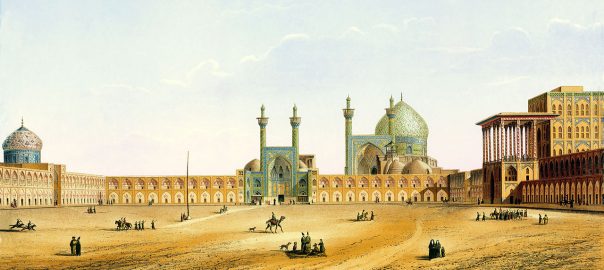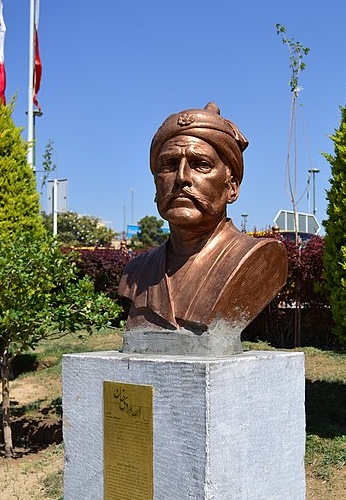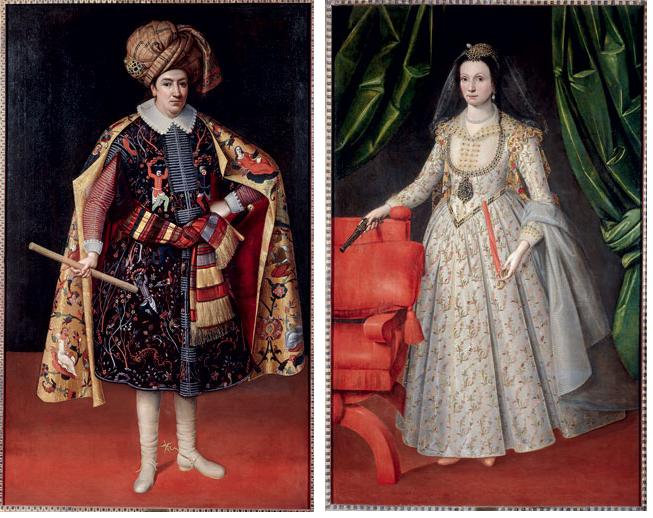I have the sense these days of approaching the lip of a volcano. I know that within just the few days/years ahead, the still-young Dutch and English empire-builders are about to burst onto the scene in so many parts of the world. But for now, 1611 CE, there is little of great importance to be seen. Oh sure, in the Americas we have branches of the Spanish empire (lay and ecclesiastical) continuing to expand their settler-colonial project at a massive pace; we have the English continuing to take their first stumbling steps at Jamestown– and actually losing Henry Hudson and his son, last seen drifting southward in the vastness of today’s “Hudson Bay” in the depths of winter; we have other European adventurers making tiny little pokes into the armor of Spain’s colonial supremacy. But nothing new.
And in London, the “King James Bible” was first published. Along with the increasing numbers of printed works by William Shakespeare and other dramatists, the era of “print capitalism” was really taking hold in England– along with the era of global-girdling piracy and plundering. Together, they were building an “English” nation.
But let us go first to Persia, where Safavid Shah Abbas I has been making huge strides in rebuilding his country after the decay (and non-trivial dismembering) it suffered under his two predecessors. Then at the end I’ll have some notes about the shenanigans of the (English) East India Company in southeast India– based on an intriguing collection of fully digitized old history books that I found online.
Rebuilding in Safavid Persia
The “news peg” for this section is that 1611 CE finally saw construction started on the great Naqsh-e Jahan Square in Isfahan, which Shah Abbas had determined should be his new national capital, replacing Qazvin. Abbas had become Shah in 1588. During his early years on the throne he had faced the very tough challenge of trying to hold together his country/empire, much of which had earlier been invaded by the Ottomans and some by the Uzbeks. One of his first acts as Shah, in 1590, had been to conclude a peace treaty with the Ottomans that, though it involved major territorial concessions, at least stopped the Ottomans from advancing any further.
(The 19th-century drawing of the Naqsh-e Jahan Square in the banner above was by French architect Xavier Pascal Coste.)
Though he was only 17 years old or so when he became Shah, Abbas seems to have taken some wise decisions. Moving the national capital to a location closer to the center of the country from the more northerly Qazvin was probably one. Another was to undertake a deep-seated reform of his army and its governance. In this latter task, he was aided by two non-Persians.
The first of these was Allahverdi Khan, a man about a decade older than Abbas who’d been born a Christian Georgian and captured by the Persians during an earlier war in Georgia. Like many such captives he underwent a probably forced conversion to Islam and was conscripted into an all-slave military formation called the gholams. (But he appears not to have been castrated, since he is recorded as fathering two sons.) Anyway, he demonstrated his military prowess and his loyalty to Abbas. By 1595-96 he was the commander of the gholam army and thus “one of the five principal officers in the Safavid administration.” By 1598 he was commander-in-chief and was starting to lead a series of military campaigns that started to regain for Persia the lands earlier lost to Ottomans or Uzbeks. In 1603, we saw that the Persians had expelled the Ottomans from Tabriz, Nahavand and other cities.
The other foreigner upon whom Abbas relied as he rebuilt his army was, as we know, the younger Englishman Robert Shirley. Robert Shirley had accompanied his older brother Anthony Shirley to Persia in 1598. Then, after Anthony went off on the ill-fated diplomatic tour around Europe of 1599, Robert stayed behind with some other Englishmen and apparently did engage in some useful military-training activities. While there, he married a member of the local Christian Circassian nobility called Teresa Sampsonia, whose WP page makes her sound pretty interesting.
In 1609, Robert and Teresa were sent by Shah Abbas on another diplomatic tour round Europe, again with the goal of building anti-Ottoman alliances. According to Teresa’s WP page, this happened:
When they set off on their first embassy trip, Robert was captured by his enemies. Teresa reportedly managed to save him and put to flight the attackers; for this, the Carmelite records praised her as “a true Amazon”. Teresa and Shirley visited the Grand Duke of Muscovy Vasili IV, Pope Paul V in Rome and King Sigismund III of Poland. In Poland, Teresa lived in a convent in Kraków for some time while her husband visited Prague… He arrived in Rome on 27 September 1609 and met Ali Qoli Beg, Abbas I’s ambassador, with whom he had an audience with the Pope. Shirley then left for Savoy [and other West European cities.] Teresa rejoined him in Lisbon via Hamburg. They then went to Valladolid and Madrid…
Teresa and Shirley left for the Dutch Republic and subsequently sailed from Bayonne to England, where they arrived around the beginning of August 1611. Their only child, a son named Henry… was born in November 1611 at the Shirley home in Sussex. His godparents were Henry Frederick, Prince of Wales, for whom he was named, and Queen Anne.
A fascinating online resource on the British in India
Recently, I stumbled across a great online collection of works on the history of the British in India written by an earlier generation of British and American historians. The index to this collection is here. These works have been digitized and organized by an outfit called iBiblio.org, which is affiliated with the University of North Carolina, Chapel Hill that has free, open-source digital collections of a wide variety of materials, both texts and music. (Fwiw, I find their indigenous “Search” capability outrageously poor. But I used Duckduckgo to do a site search for a couple of names in ibiblio.org/britishraj, which worked really well.)
Anyway, this book, The European Struggle for Indian Supremacy in the Seventeenth Century, authored by William Wilson Hunter and published in 1907, looks amazing for where I am in my project right now. It is Volume 7 of the History of India in nine volumes (1906-7), edited by A.V. Williams Jackson.
So in Chapter 7 of The European Struggle, we learn this about what the East India Company got up to in 1611:
The problem which lay before the English on the east coast of India was a more complex one. The Moghul Empire had not yet reached those distant shores. Instead of the firm order which it imposed on its provinces, the conflict of dynasties and races still raged…
The Madras coast looked out toward the Eastern Archipelago as the Bombay coast looked out toward Africa and the Cape. The Portuguese, advancing eastwards from their African base, formed their first and most lasting settlements on the Bombay side; the Dutch, reverting westwards from their Spice Island dominions, established themselves chiefly on the Bay of Bengal. In 1609 they obtained a settlement at Pulicat, a long, low isle with the surf breaking on its outer shores, and a sheltered lagoon stretching inwards to the mainland, about twenty-three miles north of Madras city. Its great backwater, or “Pulicat Lake,” formed by the sea bursting through the sand-dunes of the coast in some ancient cyclonic storm, afforded a haven for the shipping of those days.
In 1611 Captain Hippon and Peter Floris in The Globe of our seventh Separate Voyage essayed a landing at Pulicat. Floris was a Hollander who had learned the secrets of the Indian trade while in the Dutch service. Captain Hippon, with the knowledge thus obtained, resolved to strike into the port to port trade, which bartered the calicoes of the Madras coast for the spices of the Eastern Archipelago. Not unnaturally, the Dutch, who had meanwhile built a fort at Pulicat, “did beare a hard hand against them.” The queen of the place refused even to see our captain, saying that a grant had already been given to the Hollanders. But Hippon, although cast down, was not dismayed. He sailed further up the coast, and landed at Pettapoli (the modern Nizampatam), at the mouth of a southern channel of the Kistna delta – more exposed to the monsoon than Pulicat, yet sufficiently sheltered for a ship to ride out a storm. There he arrived on August 18, 1611, was well received by the local governor, and left two supercargoes to found our first shore settlement on the Bay of Bengal. Of its fortunes presently.
And remember William Hawkins, last heard of in 1609 after he’d traveled from Surat on India’s west coast to make a lengthy visit with Mughal Emperor Jahangir in Agra? We will hear more about the EIC’s activities in Surat…




